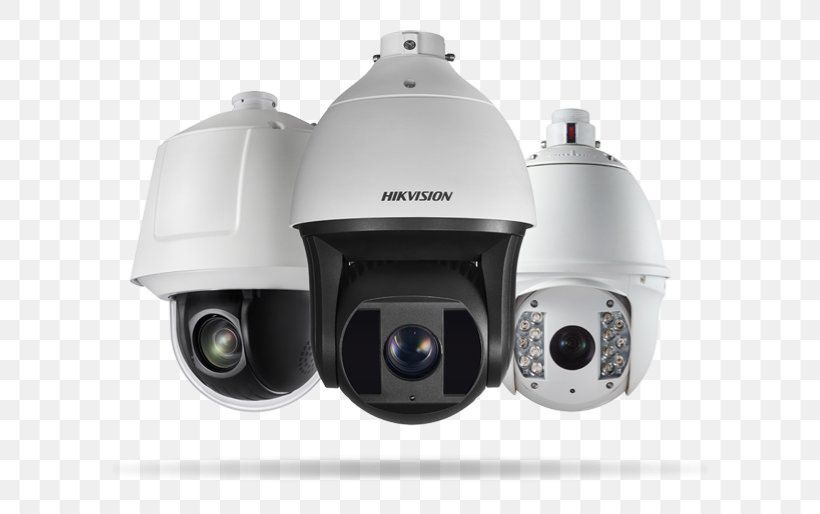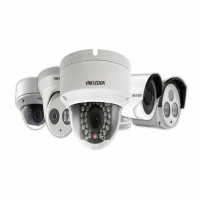Fixing Common Hikvision CCTV Issues Step by Step

Strong 8k brings an ultra-HD IPTV experience to your living room and your pocket.
Hikvision CCTV cameras are known for their reliability and high-quality performance in surveillance systems. However, like any technology, you might encounter some common issues. Whether it's a connection problem, poor video quality, or issues with your Hikvision camera, troubleshooting and resolving these problems can be simple if you follow the right steps. This guide will walk you through the process of fixing some of the most common Hikvision CCTV camera problems.
1. Camera Not Powering On
One of the most common issues with Hikvision CCTV cameras is that they fail to power on. If your Hikvision camera is not turning on, follow these steps:
Step-by-Step Solution:
Check the Power Supply: Ensure the power cable is securely connected to both the camera and the power source. If you are using Power over Ethernet (PoE), check that the PoE switch or injector is functioning correctly.
Test the Power Adapter: If you're using a separate power adapter, make sure it's the correct voltage and functioning properly. Swap it out with another adapter to see if the camera powers up.
Inspect the Power Cable: Look for any visible damage in the power cable. If damaged, replace the cable to restore the power.
If the camera still doesn't power on after these steps, the issue might be internal, and professional repair may be necessary.
2. No Video Feed or Blank Screen
If your Hikvision CCTV camera is powered on but displaying a blank screen or no video feed, the issue could be with the camera’s connection or settings.
Step-by-Step Solution:
Check the Cable Connections: Ensure that the video cable (HDMI or VGA for DVRs) is securely connected to both the Hikvision camera and the recording device (DVR/NVR).
Verify Network Connection: For IP cameras, ensure the camera is properly connected to the network. Check the Ethernet cable or Wi-Fi connection.
Restart the System: Power cycle the camera and the DVR/NVR by turning them off and on again to reset the system.
Check Camera Settings: Ensure the camera’s output settings are properly configured. Check the resolution settings and make sure the camera is set to output video.
If the video feed still doesn't appear, try using a different display monitor or test the camera with another DVR/NVR unit to rule out hardware failure.
3. Poor Image Quality or Blurry Footage
Poor image quality can be a frustrating issue with Hikvision CCTV cameras, especially when you're trying to identify a person or object clearly.
Step-by-Step Solution:
Clean the Camera Lens: Dust or smudges on the lens can cause blurry images. Use a soft, lint-free cloth to gently clean the lens.
Adjust Focus and Zoom: Many Hikvision cameras come with adjustable focus and zoom features. Make sure these settings are properly adjusted for optimal clarity.
Check the Resolution: Ensure the camera’s resolution settings are high enough for clear video quality. Lowering the resolution could cause the image to appear pixelated.
Check for Interference: Electrical interference or too much direct sunlight can impact image quality. Adjust the camera’s positioning to reduce these factors.
If you continue to experience poor image quality, the camera’s sensor may be faulty, and it may need repair or replacement.
4. Motion Detection Not Working
If your Hikvision CCTV camera is not detecting motion, it can compromise your security system. Follow these steps to troubleshoot the motion detection issue.
Step-by-Step Solution:
Check Motion Detection Settings: In the camera's settings menu, ensure that motion detection is enabled. Also, check if the sensitivity is set to an appropriate level.
Review the Motion Detection Area: Sometimes, the detection area may be incorrectly set. Adjust the detection zone so that it covers the areas of interest, such as entryways or hallways.
Ensure Clear Line of Sight: Motion detection relies on clear visibility. Make sure that the camera has an unobstructed view and is not facing glare or reflective surfaces.
Test with Movement: Test the motion detection by walking in front of the camera. If it still doesn’t detect movement, try resetting the camera to its default settings.
If these solutions don’t resolve the issue, consider resetting the camera and reconfiguring it, or checking for firmware updates that may fix the bug.
5. Unable to Access Camera Remotely
If you cannot access your Hikvision CCTV camera remotely, the issue might lie with your network settings or app configuration.
Step-by-Step Solution:
Check Network Connection: Ensure that your camera is connected to the network. For IP cameras, verify that they are connected via Ethernet or Wi-Fi.
Verify Port Forwarding Settings: If accessing the camera remotely, you may need to configure port forwarding on your router. Ensure the correct ports are open for the Hikvision camera.
Confirm Hik-Connect App Settings: If using the Hikvision app, ensure you’ve logged in with the correct credentials and that the camera is linked to the app.
Restart Your Router and Camera: Sometimes, simply rebooting the router and camera can restore remote access functionality.
If these steps do not work, you may need to reconfigure your camera’s network settings or consult the user manual for further troubleshooting.
6. Camera Not Recording or Missing Footage
If your Hikvision CCTV camera is not recording or footage is missing, there could be issues with the storage device, settings, or camera configuration.
Step-by-Step Solution:
Check Storage Space: Ensure there’s enough available space on the hard drive or cloud storage for recording. If the storage is full, delete old footage or expand the storage capacity.
Review Recording Schedule: Make sure the camera’s recording schedule is properly set. Check whether it's set to record continuously or only during motion events.
Inspect the DVR/NVR: If you're using a DVR or NVR to record, ensure it's properly connected and configured. Restarting the device may help.
Update Firmware: Outdated firmware can sometimes cause recording issues. Make sure your Hikvision camera and DVR/NVR have the latest firmware updates.
If none of these steps resolve the issue, there might be a problem with the camera’s internal hardware, and you may need to contact Hikvision support for further assistance.
Conclusion
Hikvision CCTV cameras are powerful tools for securing your property, but like all technology, they may occasionally experience issues. By following this step-by-step guide, you can troubleshoot and resolve common problems such as power issues, poor video quality, and motion detection failures. Regular maintenance, updates, and proper configuration can help keep your Hikvision camera system running smoothly and effectively.
If problems persist, don’t hesitate to reach out to Hikvision support or a professional technician to ensure your system is always operating at its best.
Note: IndiBlogHub features both user-submitted and editorial content. We do not verify third-party contributions. Read our Disclaimer and Privacy Policyfor details.


